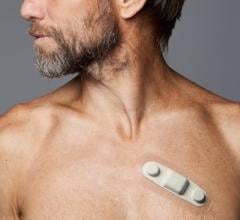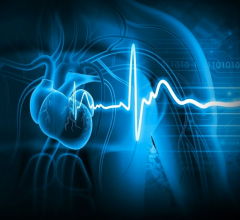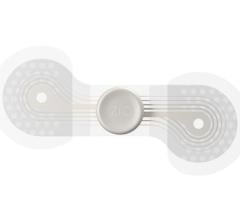
Biosense Webster's Carto Prime Mapping Module offers new tools to help shorten ablation time. Left is an example of Coherent imaging showing conduction identification, conduction velocity vectors and conduction barrier zones. Top right, Carto Finder Module automatic visualization of region of interest. Below right, LAT Hybrid imaging, showing correct identification of PVC location based on catheter location in sinus rhythm, and automated visualization of PVC points.
September 3, 2020 – Biosense Webster launched its Carto 3 System Version 7 and the Carto Prime Mapping Module to enhance electrophysiology (EP) mapping and ablation procures. This is the most advanced version of the Carto 3 System, the company’s three-dimensional (3-D) heart mapping system.
The Carto Prime Mapping Module adds valuable tools to the Carto 3 platform for further addressing all major complex arrhythmias, with significant improvements in mapping capabilities that help to significantly reduce ablation times, compared to standard mapping algorithms.[1]
Cardiac arrhythmias are a group of conditions in which the heart beats too fast, too slow or with an irregular rhythm. Arrhythmias are the cause of death for approximately 300,000 people worldwide each year, and may increase a person’s risk of stroke and heart failure.[2,3,4] Some patients with serious arrhythmias are not successful with drug therapy, so catheter ablation may be recommended and has been shown to reduce symptoms and improve patients’ quality of life.[5]
The features within the Carto Prime Mapping Module greatly enhance mapping capabilities for electrophysiologists and can significantly reduce ablation time compared with standard mapping algorithms. Shorter ablation times can result in safer, and more efficient and economical procedures, providing value to both patients and physicians. For patients, a shorter ablation time may require less anesthesia, and may result in less nursing and facility time.[6,7,8,9,10,11] Additionally, shorter ablation times can benefit healthcare facilities due to lower per procedure overhead costs.[11,12]
“This technology has a full package of EP mapping solutions to help get clear and accurate visualizations of almost every type of complex arrhythmia,” said Dr. Vias Markides, consultant cardiologist and Heart Division director at Royal Brompton Hospital in London. “Features like CartoFinder, LAT Hybrid and Parallel Mapping are significant improvements in mapping capabilities and make this a transformative step in technology.”
The Carto Prime Mapping Module is a fully integrated solution that incorporates these tools:
• Coherent Mapping may simplify the diagnosis of scar-related complex atrial arrhythmia by applying physiological constraints on local activation times (LAT) information. In a multi-center study (n=60), Coherent Mapping significantly reduced the ablation time required for arrhythmia termination in comparison with ablation guided by standard mapping algorithm.[1]
• CartoFinder expands the Carto 3 System mapping capabilities to irregular atrial arrhythmia, identifying repetitive focal and rotational activations.
• Parallel Mapping allows for simultaneous mapping of different arrhythmia using the same catheter locations.[13]
• LAT Hybrid provides increased location accuracy compared with standard premature ventricular complex (PVC) mapping by associating the PVC map LAT information to its corresponding Normal Sinus Rhythm location.[14]
“Carto Prime is the most important software release since the introduction of Carto 3,” said Elad Anter, M.D., associate section head, electrophysiology at Cleveland Clinic. “Coherent Mapping helps to overcome many of the challenges in electro-anatomical mapping of complex arrhythmias, and with Parallel Mapping, we’re able to map different rhythms simultaneously.”
For more information: www.biosensewebster.com
References:
1. Anter et al. Activation Mapping With Integration of Vector and Velocity Information Improves the Ability to Identify the Mechanism and Location of Complex Scar-Related Atrial Tachycardias. Circ Arrhythm Electrophysiol. 2018 Aug;11(8):e006536. doi: 10.1161/CIRCEP.118.006536.
2. GBD 2017 Causes of Death Collaborators. Global, regional, and national age-sex-specific mortality for 282 causes of death in 195 countries and territories, 1980–2017: a systematic analysis for the Global Burden of Disease Study 2017. The Lancet. 2018;392:10159:1736-1788.
3. Lin CY, Chang SL, Chung FP, et al. Long-Term Outcome of Non-Sustained Ventricular Tachycardia in Structurally Normal Hearts. PLoS One. 2016;11(8):e0160181.
4. Kamel H, Elkind MSV, Bhave PD, et al. Paroxysmal Supraventricular Tachycardia and the Risk of Ischemic Stroke. Stroke. 2013;44:1550-1554.
5. Hugh Calkins, Gerhard Hindricks, Ricardo Cappato, et al. 2017 HRS/EHRA/ECAS/APHRS/SOLAECE expert consensus statement on catheter ablation and surgical ablation of atrial fibrillation. 2017.
6. Leshem E, Zilberman I, Tschabrunn CM, Barkagan M, Contreras-Valdes FM et al. (2018) High-power and short-duration ablation for pulmonary vein isolation: biophysical characterization. JACC Clin Electrophysiol. 4 (4): 467-479.
7. Barkagan M, Contreras‐Valdes FM, Leshem E, Buxton AE, Nakagawa H et al. (2018) High‐power and short‐duration ablation for pulmonary vein isolation: Safety, efficacy, and long‐term durability. Journal of Cardiovascular Electrophysiology 29 (9): 1287-1296.
8. Leshem E, Tschabrunn CM, Contreras-Valdes FM, Zilberman I, Anter E (2017) Evaluation of ablation catheter technology: comparison between thigh preparation model and an in vivo beating heart. Heart Rhythm 14 (8): 1234-1240.
9. Haines DE (1993) The biophysics of radiofrequency catheter ablation in the heart: the importance of temperature monitoring. Pacing and Clinical Electrophysiology 16 (3): 586-591.
10. Yildiz M, Yilmaz Ak H, Oksen D, Oral S. Anesthetic Management In Electrophysiology Laboratory: A Multidisciplinary Review. J Atr Fibrillation. 2018;10(5):1775. Published 2018 Feb 28. doi:10.4022/jafib.1775
11. Klein G, Lickfett L, Schreieck J, Deneke T, Wieczorek M et al. (2015) Comparison of ‘anatomically designed’ and ‘point-by-point’ catheter ablations for human atrial fibrillation in terms of procedure timing and costs in German hospitals. Europace 17 (7): 1030-1037.
12. Medicare Standard Analytic File, Hospital Cost Report Information System, 2016.
13. Bench testing performed by Biosense Webster, Inc. CARTO 3 V7 CARTOFINDER Algorithm POD Report February 2019.
14. Steyers III CM et al. Ablation using 3D maps adjusted for spatial displacement of premature ventricular complexes relative to sinus beats: Improving precision by correcting for the shift. J Cardiovasc Electrophysiol. 2019;1-7.


 September 12, 2025
September 12, 2025 









